Opinion
The Puzzle at the Heart of the Stunning New SFMOMA
The $300-million mega-museum is here to stay.
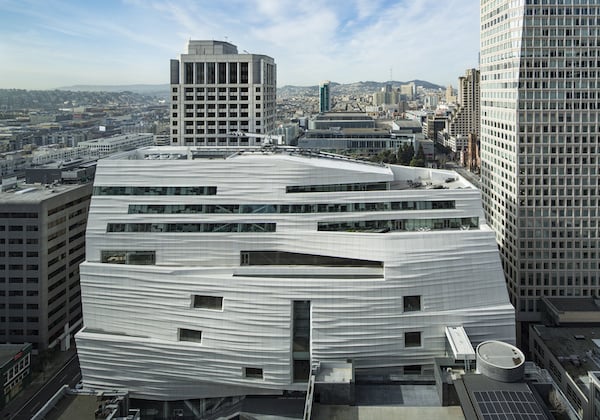
The $300-million mega-museum is here to stay.

From Haight-Ashbury to Silicon Valley, San Francisco looms disproportionately large in the cultural imagination. Despite years of tech-fueled growth, the City by the Bay remains fairly small as US cities go, somewhere between Indianapolis and Jacksonville, Florida.
The dramatically expanded San Francisco Museum of Modern Art (SFMOMA), which opens to the public next month, is above all a monument to this outsized cultural clout: It bills itself as the largest collection of contemporary art on display anywhere, and it feels like it.
On first inspection, the $300-million-plus new museum by Norwegian architecture firm Snøhetta is a success, both alluring and ambitious. The constricting old Mario Botta-designed SFMOMA building has been successfully sublated within this new cultural supertanker.
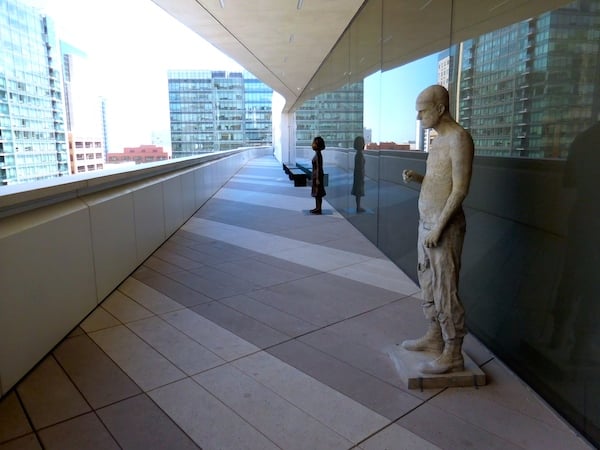
Outdoor terrace at the new SFMOMA. Courtesy of Ben Davis.
Curators now have seven floors to work with, yielding up vast rambling corridors of art, clearly organized pathways that are still full of potential detours and surprises. There are outdoor terraces and leisurely sloping staircases linking floors and a courtyard space overlooked by a green wall planted with local flora. There’s lots of natural light.
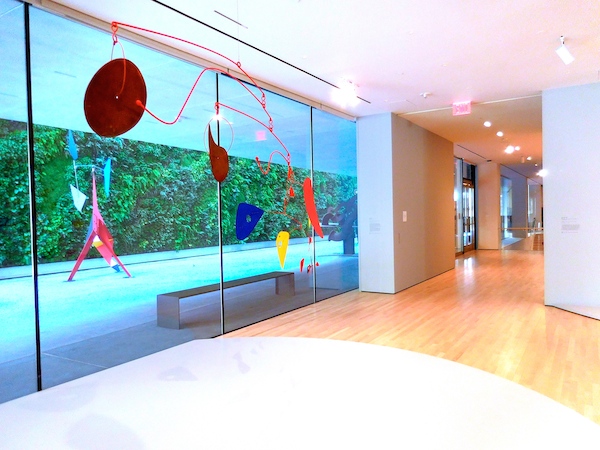
The “Green Wall” at SFMOMA, glimpsed through the Calder Galleries. Courtesy of Ben Davis.
What to do with all this museum? A full 19 shows are opening at once in the giant building, so it is hard to generalize. But the aesthetic universe of the rebooted SFMOMA feels fairly isolated from the hippy-techie imagery of San Francisco.
True, you’ll find moments of groovy San Francisco cool. For instance, in the section dedicated to Northern California art, there’s the odd and lovable canvas by Bay Area figurative painter Joan Brown (1938-1990), posed demurely in the foreground while a turbulent vision of a swim to Alcatraz hovers in the back.
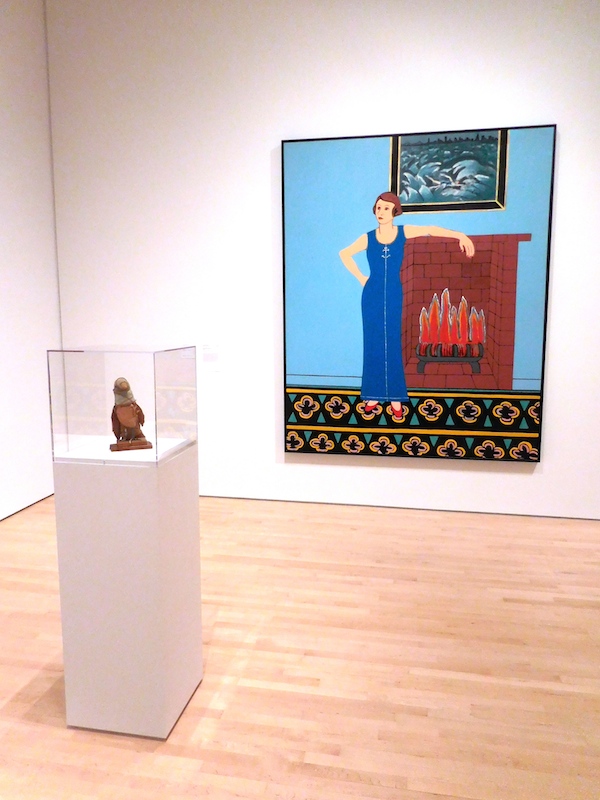
Joan Brown, Untitled (Bird) (1957-60) and After the Alcatraz Swim 1 (1975). Courtesy of Ben Davis.
On the pandering-to-tech side, in the new museum’s design galleries, the curators offer an unfortunate homage to Google Glass as a design icon.
On a small screen, a video shows a woman wearing her Glass, demonstrating voice commands (“Google: How do you say, ‘where is the museum?’ in Spanish?”). The demonic visor itself is displayed in a little reliquary niche below. A wall text rationalizes the inclusion of this reviled corporate lemon because it “contributed to the shifting, dynamic, and interactive state of graphic communication in today’s digital era.”
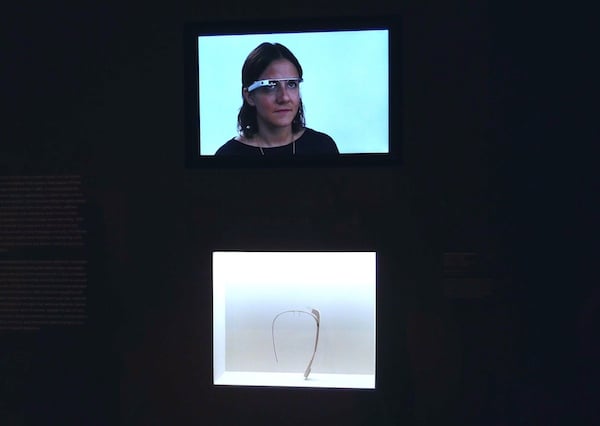
Exhibit dedicated to Google Glass. Courtesy of Ben Davis.
But the overriding flavor of the SFMOMA reopening is set not by San Francisco’s beatnik past or high-tech present but by the personality of one very, very wealthy couple: Doris and Donald Fisher, whose donation of their massive art collection inspired the institution to embark on this epic expansion in order to showcase the trove.
Indeed, the whole spectacle is presented as a testament to the Fishers’ spirit. A quote by Donald and Doris beams at you as you enter the building from Howard Street: “We want to give back to the city we love by sharing the art that means so much to us.” Aw…
Incidentally, when he died in 2009, Donald was at least as well known for his association with sweatshop labor (he founded The Gap, making him over the years a personal target for labor-rights activists), and staunch support for an aggressively pro-business agenda in San Francisco, as he was for his art. On his passing, the SF Weekly summed up his public profile thusly, as an opponent of all things progressive: “the moderate-to-rightist movement in this city has lost its white knight.”
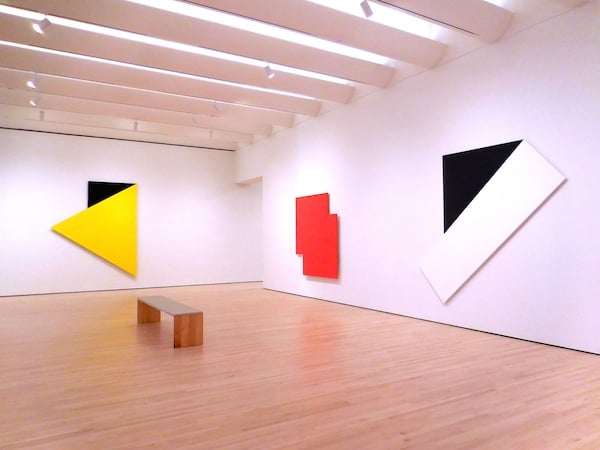
Ellsworth Kelly galleries as part of the Fisher Collection at the new SFMOMA
Image: Ben Davis
The highlights of the Fisher collection—270 of 1,100 works in total—dominate three floors of the reopened museum, and their quality is hard to argue with: On the third floor, there’s “Approaching American Abstraction,” dedicated to the Fishers’ holdings of mid-century painting greats (Ellsworth Kelly, Richard Diebenkorn, Cy Twombly, Brice Marden, etc.); on the fifth, “Pop, Minimal, and Figurative Art” (Chuck Close, Roy Lichtenstein, Andy Warhol, Dan Flavin), plus a comparatively cursory gallery of modern British sculpture (Antony Gormley, Henry Moore, Tony Cragg, Anish Kapoor); and on the sixth, “German Art After 1960,” devoted to the heady highs of recent German art (Georg Baselitz, Sigmar Polke, Gerhard Richter, Thomas Struth).
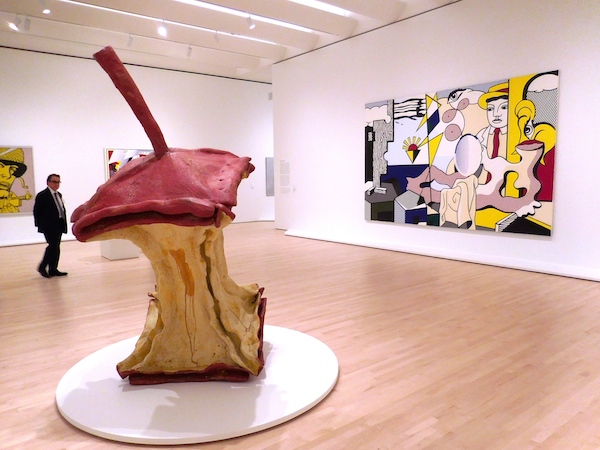
The “Pop, Minimalism, and Figurative” galleries at SFMOMA. Courtesy of Ben Davis.
Despite the overall awe-inspiring quality, something nags at you about it. After a while, you realize that this is because the trove is so relentlessly blue-chip that it reads as a collection of trophies. Donald liked “big, powerful works of art,” his son told the press yesterday at the preview. The man himself was more precise, writing in his autobiography: “One of my principles is to never buy an artist that I can’t sell at auction.”
This taste, in turn, might help explain what would seem to be the Fisher Collection’s perplexing absences. For instance, the art here is—to use a technical, art-historical term—a real “sausage fest” (notwithstanding a serene chapel-like installation of block-and-grid abstractions by Agnes Martin).
When you take your cues from the market, you replicate its biases.
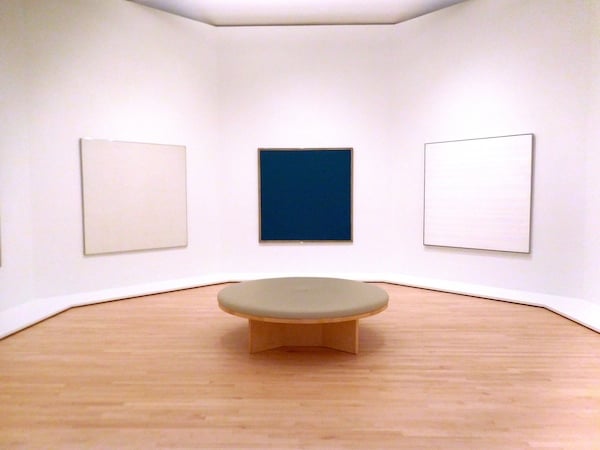
Agnes Martin galleries, part of the Fisher Collection at SFMOMA
Image: Ben Davis
SFMOMA director Neal Benezra describes the agreement with the Fishers as a “public-private partnership,” touting the landmark collaboration as a new model for museums in general, which can’t afford to compete with the new breed of mega-rich private collectors in the market. In practice, SFMOMA will have the Fishers’ art on deposit for “a minimum” of 100 years.
In an interview, Benezra explained the further conditions: the agreement states that the institution can blend Fisher Collection works in with their own permanent collection for subsequent hangs. But the museum is obliged to show it as it is here—as a monographic ode to Don and Doris’s collecting—once every decade.
And so, the Fishers’ quite obvious biases—as well as, of course, the strengths of their collection—are going to inform the museum at least until 2116. That’s an awful long time in a town where “disruption” is nearly a religion.
Will art history still think quite so much of, say, the chest-thumping neo-expressionism of Anselm Kiefer then? It looks dated to me now.
In addition to wooing the very rich into giving their art, any civic-minded art museum today has the other little problem of catching up with an increasingly diverse population that is bringing new histories into play. “We are very aware that California in a few years will be largely Spanish-speaking state, and so that’s a very important part of our mission, to think about Mexico and Central America,” Benezra told me. “And, to use a political term, we want to pivot to Asia as well—so we have an interesting geographic opportunity that a museum in New York might not have.”
Yet there’s only the barest hint of such concerns in these first shows, while the canonical, basically Euro-American narrative of the Fisher Collection stands as the undeniable gravitational center of it all.
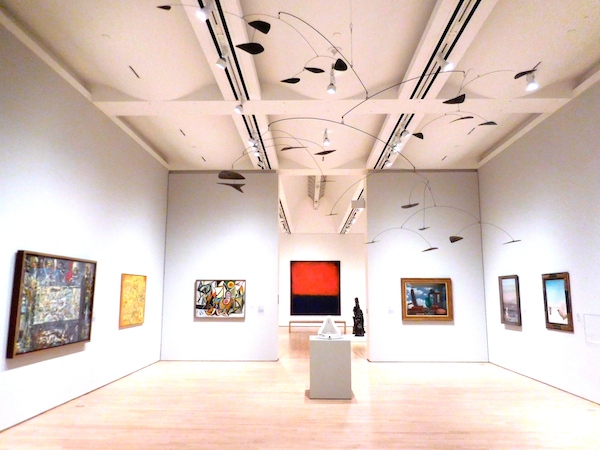
Installation view of the permanent collection galleries, at SFMOMA. Courtesy of Ben Davis.
The new SFMOMA is a vast, vast endeavor—and it is a mark of how much it has to offer that I am about to pass over so much here: the reinstall of its permanent collection, with icons from Henri Matisse’s gorgeous Femme au chapeau (1905) to Marcel Duchamp’s classic toilet-as-art sculpture, Fountain (1917); the more sparky contemporary art and new media shows on the top floor; and—perhaps my favorite part of the new museum—its photography galleries, which are being billed as the largest dedicated museum space for photography in the US.
In this outing, these spaces feature some of the sharpest curating, and some of the most moving and surprising art.
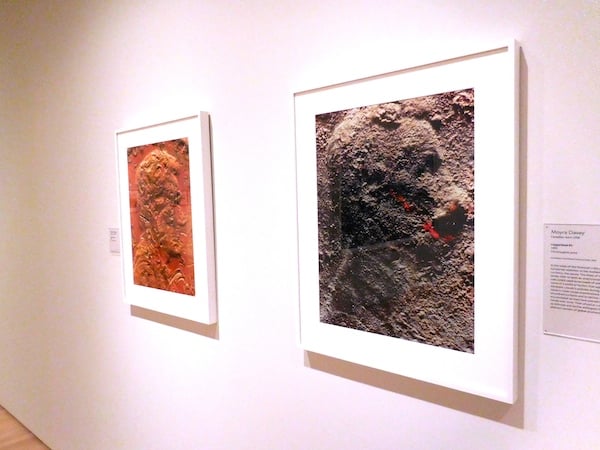
Works by Moyra Davies in the photography galleries
Image: Ben Davis
I skip lightly over them because I want to say one final thing about general context. It would be churlish not to find something to like here. The museum’s opening will be greeted with particular euphoria as a piece of good news, because pretty much every other art story coming out of San Francisco is about artists being displaced, along with anyone who doesn’t make big bucks, priced out by San Francisco’s hyper-driven boom.
If you want to be really grim about it, you can also think of this lavish, slick new SFMOMA as a very expensive tombstone for the local art scene. That, it seems to me, is the Curse of Modern Mega-Museums: Inequality means that the wealth that makes them possible tends to crowd out the art scene that they should really be servicing, taking away with one hand what it gives with the other. Just as the museums have grown ever bigger, that pattern has grown ever more intense as the divides in society grow starker. It follows all this flashy stuff like its shadow.
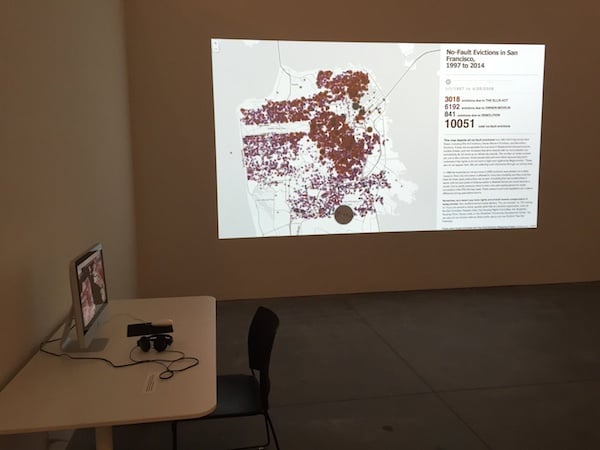
Installation view of the Anti-Eviction Mapping Project in “Take This Hammer” at the Yerba Buena Center for the Arts
Image: Ben Davis
In this case it’s not far off, literally. Right across the street from the new SFMOMA is the Yerba Buena Center for the Arts. Currently on view there is “Take This Hammer,” curated by the critic Christian Frock, surveying a variety of San Francisco artists and groups engaged in creative protest, often around exactly these issues. The Anti-Eviction Mapping Project, for instance, offers an animated map giving image to the sheer volume of transformation in the Bay Area, “a picture,” Rebecca Solnit says in an accompanying pamphlet, of “a city punched by money;” 3.9 Artist Collective’s stark billboard-style work bitterly decries the displacement of black residents from San Francisco.
It’s a raw, woolly, sometimes inspiring and disturbing show, representing struggles that are important to think about if you don’t want to become entirely cynical about the future of art or the future of the city. My guess is Donald Fisher would have hated it.